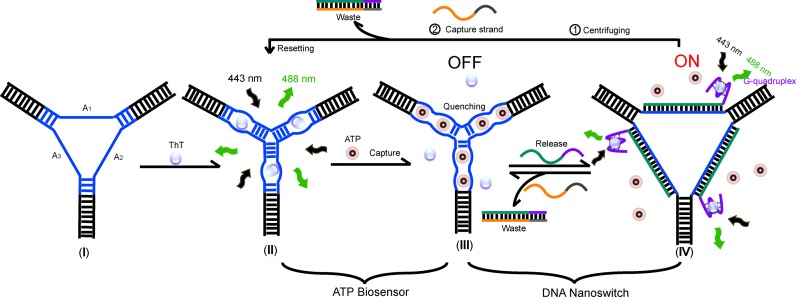Scheme 1.
Illustration of the working principle of the DNA nanoswitch-controlled reversible nanosensor. (I) The nanostructure of ARTWN is self-assembled from equivalent of three component strands A1, A2 and A3. (II) The initial state of nanosensor. ThT molecules intercalate into the two adjacent embedded ATP aptamers intermolecularly, giving rise to a fluorescence increase of ThT. (III) The ‘OFF’ state of the switch cycle. The bound ThT molecules are displaced by ATP, accompanied by a sharp fluorescence decrease. (IV) The ‘ON’ state of the switch cycle. Upon introduction of the release strand, the central ATP aptamers are fully hybridized thereby releasing the ATP molecules. The free ThT molecules bound to G-quaduplexes serves as a fluorescence indicator for the switch cycle.

